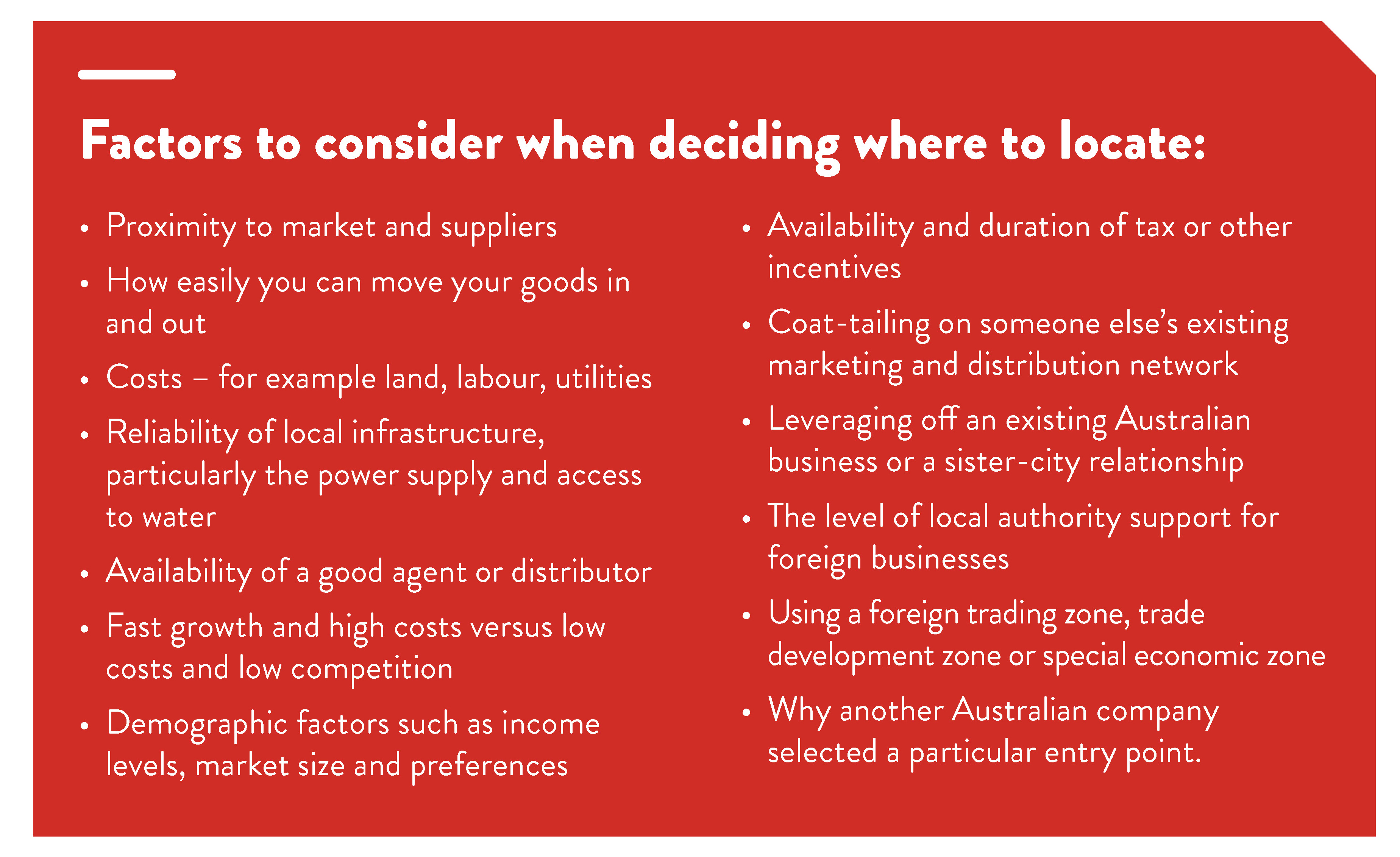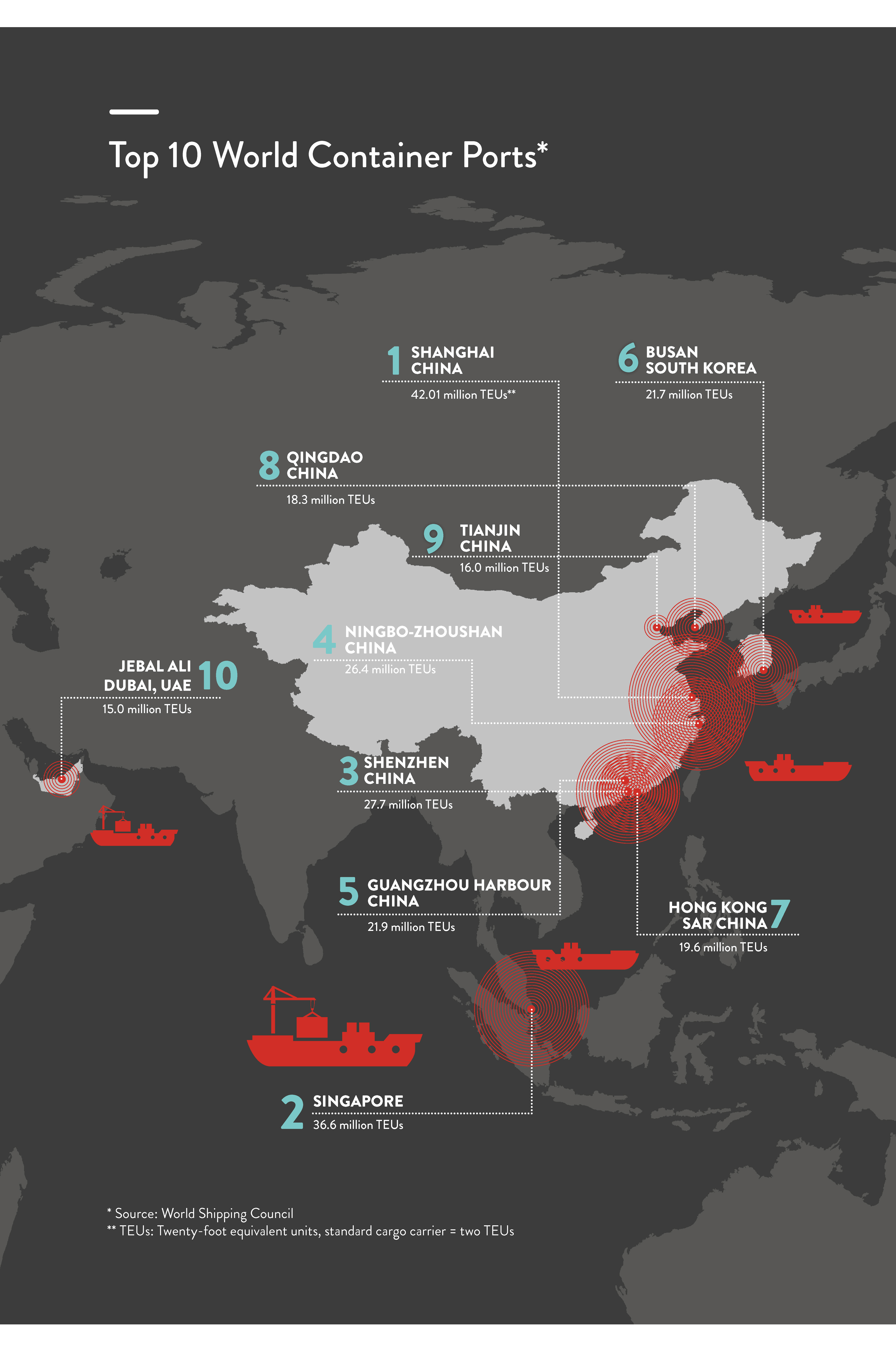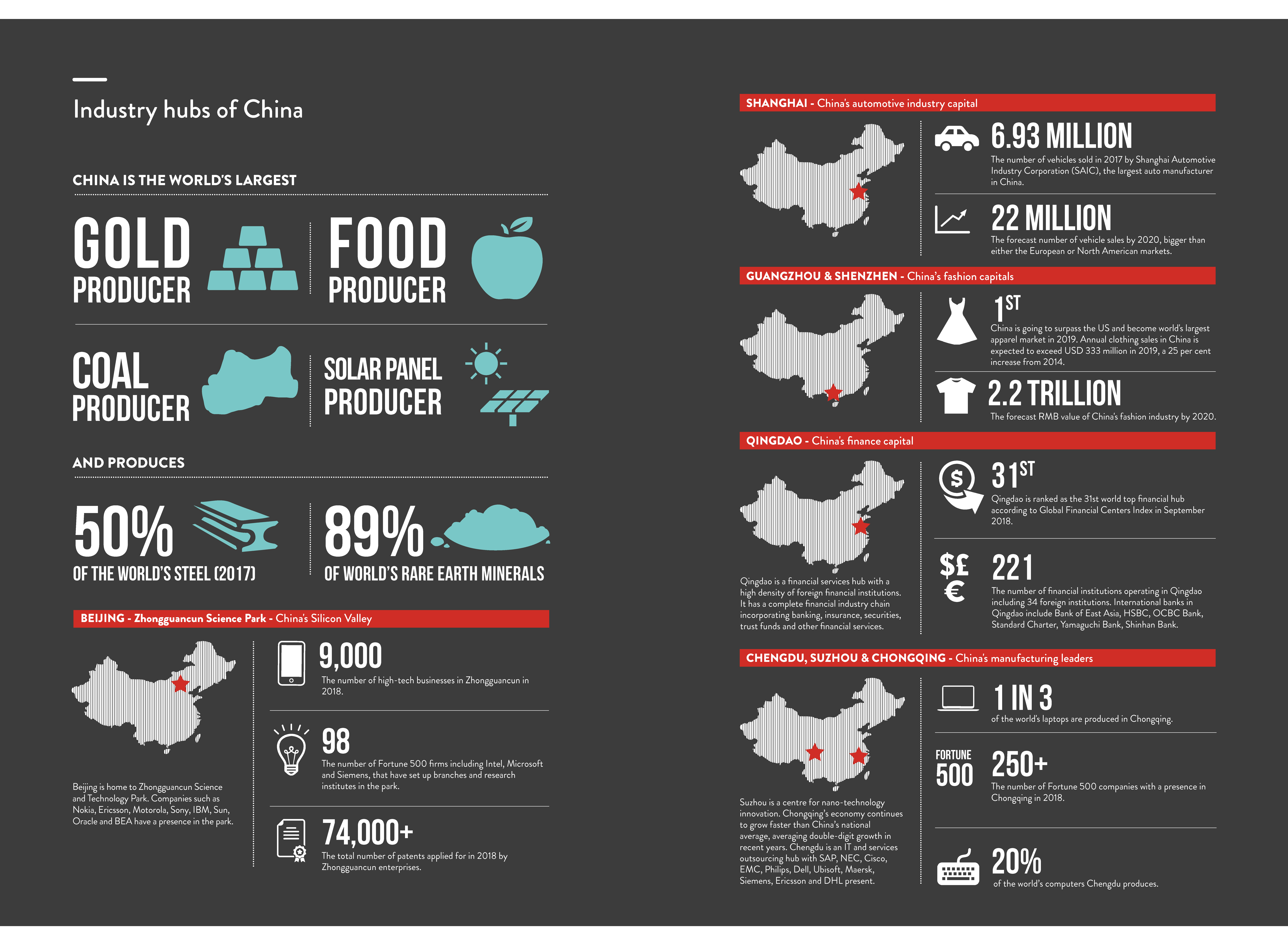Major cities for doing business in China
_UPDATED.png)
With the diversity of business opportunities available in China, the question may not be why should I do business in China, but why should I do business in Beijing? Or Shanghai? Or Guangzhou?
The vast bulk of business in China is centred on the major cities and economic zones. For Australian businesses with little experience in China, a fact-finding mission in one of the main cities is a helpful starting point, as the concentration of businesses and professional services is much higher in these cities than in regional areas.
It is helpful to think of the Chinese economy as a decentralised collection of several regional economies. The eastern provinces, containing China’s largest and wealthiest cities, also hold most of China’s manufacturing hubs. Central China is more agriculture-focused and not as wealthy, although low-end manufacturing is increasingly moving into the region. Western China is the least economically prosperous region, although it has significant natural resources. The three wealthiest and most important economic regions are all on the east coast: the Pearl River Delta (close to Hong Kong), the Yangtze River Delta surrounding Shanghai, and the Bohai Bay region near Beijing.

Having different strategies for different markets within China is important, as it helps to make the most of regional advantages. In addition to different areas being hubs for specific industries, they also have different business regulations and labour laws.
Some cities may also be designated as special economic zones, such as the Shanghai Free Trade Zone. For example, under the China Australia Free Trade Agreement (ChAFTA), Australian law firms located in the Shanghai FTZ are allowed to offer Australian, Chinese and international legal services through a commercial presence, without restrictions on the location of clients. Choosing your city of operation wisely is therefore critical.
Another consideration to make is access to infrastructure. In the 2014 World Economic Forum report, China was ranked (out of 144 countries) 17th for rail infrastructure, 49th for road infrastructure, 53rd for port infrastructure, and 58th for air infrastructure. If your business is resource-intensive, or you plan to import or export bulk amounts of goods, proximity to seaports, roads, airports and railways is critical.

Beijing
The capital of China, Beijing (formerly known as Peking) has an extensive imperial past and a population of more than 21 million. Covering an area of 6,487 square kilometres, central Beijing is divided into five districts. As the seat of China’s Government, Beijing has many embassies, and as one of the top cities for business, it holds some of the world’s largest corporations.
Shanghai
Shanghai is the commercial centre of China and the country’s most cosmopolitan city. It is large and densely populated, with more than 24 million people over an area of approximately 6,340 square kilometres. Within Shanghai is Pudong, a special economic zone of banks, skyscrapers and new residential compounds.
Guangzhou
Formerly known as Canton, Guangzhou is the third-largest city in China with a population of more than 12 million. It is in the southern province of Guangdong, which borders Hong Kong through the city of Shenzen. A centre for manufacturing, Guangzhou is divided into ten districts.
Dozens of other cities, provinces and special economic zones exist in China and act as industry hubs – from financial services hubs and automotive hubs to innovation and science hubs.

Want to learn more? Explore our other China information categories or download the China Country Starter Pack.
